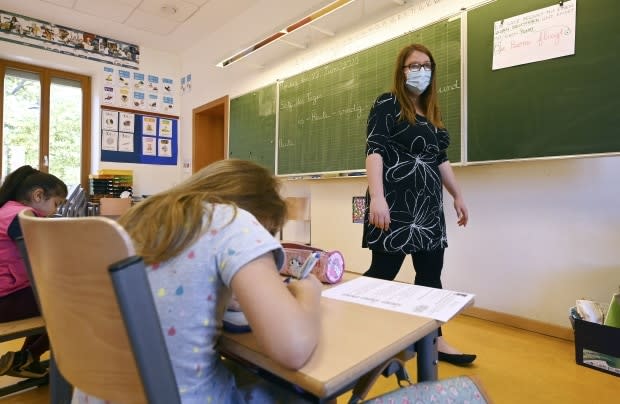Dr. Bonnie Henry calls for cooperation as B.C. prepares for return to school in September
As the September school start looms closer — and parents and educators continue to express anxiety about the roll-out — B.C.'s Provincial Health Officer called for cooperation, kindness and compassion.
"Out of fear and concern, it can be tempting to shut our doors and turn our backs on each other. That's not what we have been doing in B.C.," Dr. Bonnie Henry said at the pandemic update press conference Thursday.
The July 29 announcement that the majority of B.C. students will head back to in-class school this fall, organized into learning groups to reduce the number of people they come into contact with, along with other safety measures, has received mixed reaction among parents, teachers and other educators.
Many are concerned about how young children will be able to adequately practice physical distancing and proper hygiene, whether schools will be adequately organized by September, and most importantly, whether children and adult staff members will transmit the virus or fall sick.
Henry was gently persistent in her messaging: "Keeping schools closed has a cost well beyond education."
Citing the gravity of her decision to shut schools down in March when cases spiked, Henry said there have been many unintended downsides to the school closure for many of B.C.'s students.
School can be a refuge
"For many children in this province, they don't have the resources to work virtually. For many children in this province, being at school is where they get health care. It's a safe place for them. It's a place where they can get psychological support, where they may get a meal," she said.
"There are many more things associated with our school community that are incredibly important for child health and growth, and for the future of children in our province."

Henry said since the March school closure, more information has been gleaned about how children are affected by the virus and the role they play in its transmission.
Ways to control transmission
"We know a lot more now," she said, adding the severity of the illness in children is very mild and while they can transmit the disease, there are measures available to control the spread.
There will be layers of protection in schools to allow children, teachers, educators and staff to be there safely, said Henry.
Some of these measures include the cohort groups, staggered arrivals at school, limiting the number of adults coming into the building, using masks in certain settings like school buses, increasing opportunities for handwashing and increased physical distancing.
Schools have never been 'zero-risk'
"We do need to remember that school has never been a zero-risk environment in terms of infectious diseases. We get influenza. We get measles," she said.
"If there's a case of COVID, we have a plan. We know what to do. We minimize it and any risk of transmission and we support people who are infected."
Henry said it's important to work cooperatively and collaboratively and think differently about what school would look like.
"People are thinking of the school that they left in March. It is different now," said Henry.
"You can make a classroom safe. It means taking out lots of things that may have been in there before ... We have to think differently."

